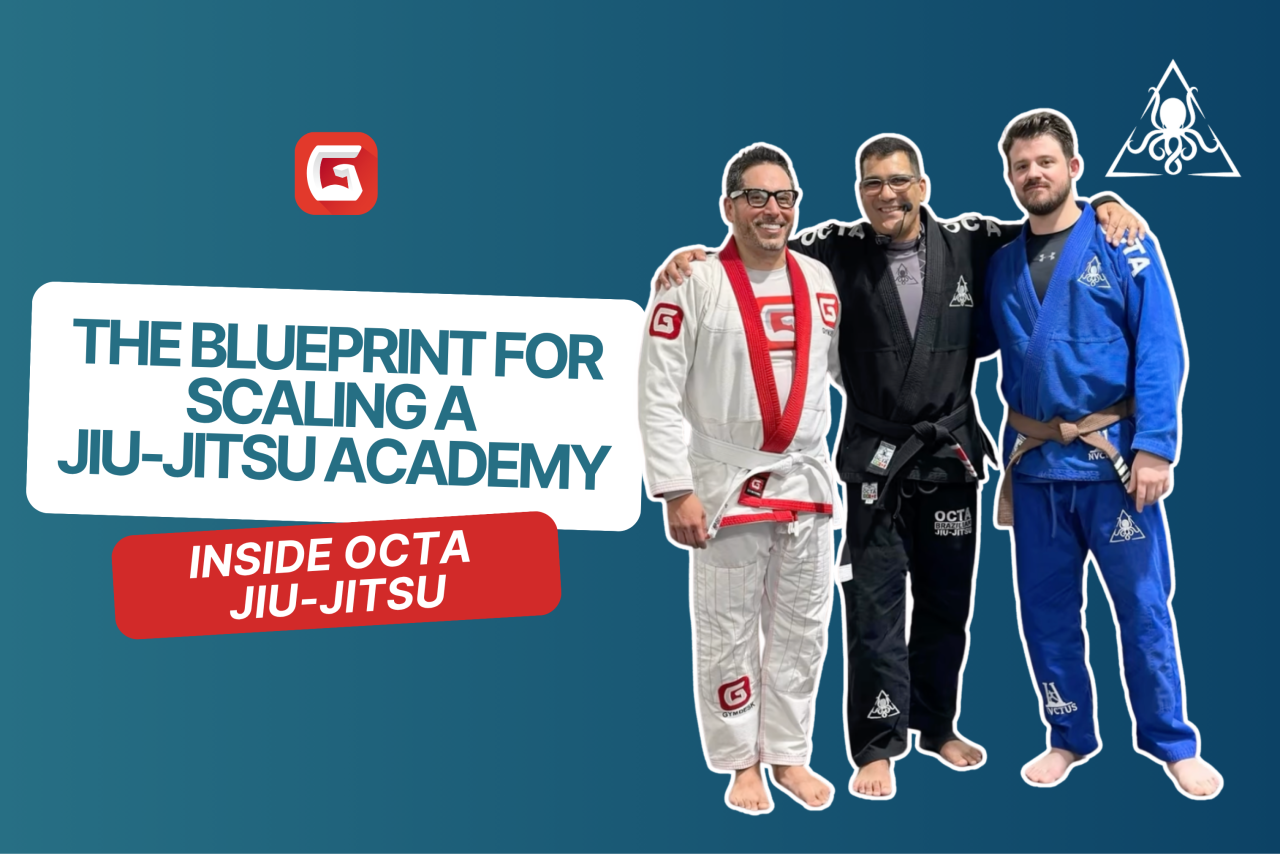How a Family-First Jiu-Jitsu Model Scaled to Multiple Locations

Walk into Octa Jiu-Jitsu HQ in Oakville, Canada, and you’ll notice two things right away: kids laughing as they tie their belts and a row of parents leaning forward in the viewing area, tracking every drill. Yes, there are killers on the mat. But the heartbeat here is family: parents, kids, and grandparents learning the same language of movement, confidence, and self-control.
That “family-first” identity isn’t just a vibe. It’s a system. And it’s how Octa, launched as a post-pandemic passion project by head coach Luiz (Luis) Costa, a former IT professional from Rio, grew to multiple locations in just a few years without losing what made the first dojo special. This is the story and the playbook behind scaling a culture, not merely a curriculum.
The spark: post-pandemic clarity and complementary skills
Octa didn’t begin with a five-location roadmap. After moving to Canada in 2013 and working in IT, Luiz kept training and teaching. The seed for a school existed, but it wasn’t urgent until after COVID. Community felt fragile. Kids needed structure. Families needed a place that was welcoming, not intimidating.
Luiz teamed up with Greg, a brown belt with business experience. They shook hands on a simple split and a shared mission: Bring jiu-jitsu to families. From day one, they operated like a modern brand, not a mom-and-pop dojo, and that mindset made all the difference.
The “Pioneer” presale that created early momentum
Before the doors opened, Octa ran a “Pioneer” presale where early members locked in their pricing for as long as they stayed active. The offer did three important things. It created urgency with a clear incentive and deadline, built social proof as 50 members joined before the first warm-up, and established a tight-knit founding community.
That early wave turned into about 200 members within eight months, thanks to a kids’ program that made parents the school’s best marketers.
“If I can teach a child to be calmer under pressure and more confident, I can change how an entire family handles hard things.”
Designing for families, not just fighters
Octa’s competitive athletes succeed, but the school is intentionally built for belonging. The layout includes a parent viewing area, the programs move in clear stages from intro to advanced, and families often train together so that parents and kids can literally speak the same jiu-jitsu language at home.
The curriculum emphasizes de-escalation before domination. Kids learn open-hand stances, verbal boundaries, and control positions that end conflict without harm.
The results show up outside the mats. One parent shared footage of his son calmly controlling a schoolyard aggressor without throwing a single punch. Another student fell from a horse and used a jiu-jitsu break fall to avoid injury. These stories travel quickly and inspire entire neighborhoods to join.
Systematizing culture so it scales
Many gyms expand the logo but lose the feel. Octa took the opposite approach: codify the feel so it can grow.
Each location follows the same curriculum theme each week, while instructors add their own preferences and style. Regular black belt and stakeholder meetings keep everyone aligned. Operationally, the rule is simple: know everyone’s name. It sounds small, but it ensures that instructors notice when attendance drops or progress stalls.
Growth is measured and local. New locations form a horseshoe around the Oakville headquarters, close enough for oversight but far enough to reach new communities. Each school opens only when a technically skilled, mission-aligned leader is ready.
“Hard skills are common. Mission alignment is rare. We hire for both, but we protect the mission first.”
Building a marketing engine that sustains growth
Octa’s presale wasn’t a one-time event but the beginning of a repeatable system. The positioning is clear: a family-first academy that teaches confidence and control. Leads are captured through campaigns and followed up quickly with friendly, human communication. Intro classes feel approachable and safe, converting visitors into long-term members.
Behind the scenes, centralized dashboards track attendance, promotions, and communication across locations. Every site operates with consistent data, not guesswork. When your brand promise is safety and clarity, your systems must reflect the same discipline.
Balancing competition and community
Family-first doesn’t mean anti-competition; it means competition in its proper place. Luiz’s son Michael, now 18, recently won No-Gi Pans at purple belt while managing Type 1 diabetes. During one event, he competed with dangerously high blood sugar, showing not just athletic skill but mental toughness.
Michael splits his training between Octa and time in New Jersey with the Meow Brothers. The message to students is clear: if your goal is world-class competition, there’s a path. If your goal is self-confidence, health, or shared family time, there’s a path too. A family-first academy can hold all of it.
Keeping the soul intact through process
Every Octa location looks and feels consistent, but each reflects the personality of its head coach. Luiz encourages this individuality as long as the core principles stay intact: families feel safe, students learn to de-escalate before they dominate, and coaches collaborate openly.
Growth is steady but never rushed. Regular meetings, shared curriculum updates, and feedback loops ensure that expansion doesn’t mean dilution.
“We can grow fast,” Luiz says, “but we can’t rush.”
Five lessons for other gym owners
- Sell the mission before the mats. A well-designed presale with lifetime pricing can fund your build-out and attract members who share your vision.
- Engineer the first-week experience. Map out a clear path from intro to advanced and train staff to make it smooth.
- Codify what and how you teach. A synchronized weekly theme keeps multiple locations aligned while leaving room for creativity.
- Make attention measurable. Knowing a student’s name is the foundation for real retention and community.
- Hire for heart, not just for skill. Technical ability matters, but alignment with your mission ensures the culture stays strong.
Why the family-first model works
Most gyms market the what—classes, schedules, belts. Octa markets the why: we build confident humans and stronger families. That simple difference attracts more people, builds loyalty, and fosters a community that stays.
When the mission is clear, the systems support it. Presales fill the room, parents spread the word, and kids grow up through the program. Adults discover mindfulness through movement, while competitors rise without overshadowing the culture.
Scaling this kind of environment isn’t about speed; it’s about consistency—of message, of care, and of experience. When every new location opens its doors with the same welcome and warmth, growth doesn’t water down the brand. It amplifies it.
Families notice. Communities notice. And over time, so does the map.
Gym management software that frees up your time and helps you grow.
Simplified billing, enrollment, student management, and marketing features that help you grow your gym or martial arts school.





